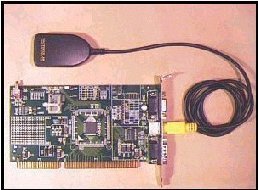IrDA
IRDA, or Infrared Data Association, is an organization that creates standards for two-way, interoperable, infrared devices. IRDA devices differ from regular infrared devices, such as remote controls and infrared computer mice, because they are able to receive data as well as transmit it. However, IRDA technology can be found in a wide variety of electronics, such as digital cameras, MP3 players, smartphones, and HPC devices. IRDA technology allows these devices to wirelessly share data fast with personal computers in either direction, but requires a direct line-of-sight between the two devices.
How IRDA Works
IRDA works in the same way other infrared devices do: When a device using IRDA connects to another device, contacts inside the device close and change the amount of resistance in the circuit. This change in resistance creates a signal that is passed to an LED in the device and is used to produce an infrared beam of light that is received by the device it is connecting to via a photo-diode and another circuit.
Applications
IRDA technology has many applications. For example, wireless cameras and MP3 players can both use IRDA to transfer files to and from a personal computer. Likewise, PDAs and smartphones can use IRDA technology to connect to corporate servers and laptops alike. While IRDA technology is not as popular as Bluetooth, it is widely used and can be used for the same purposes.
Advantages
IRDA technology is advantageous because it is inexpensive and provides users with fast, wireless data transfers. IRDA technology is also advantageous because it can be equipped by any device that has a USB port or TRS jack.

| Fixed/Mobile | Mobile |
| Circuit/Packet | Point to Point |
| Max Bandwidth | 16Mb |
| Range | 1M |
| Frequency | Infrared |
| Host Network | None |
| Definer | The Infrared Data Association |
| URL | http://www.irda.org/ |


Comments - No Responses to “IrDA”
Sorry but comments are closed at this time.